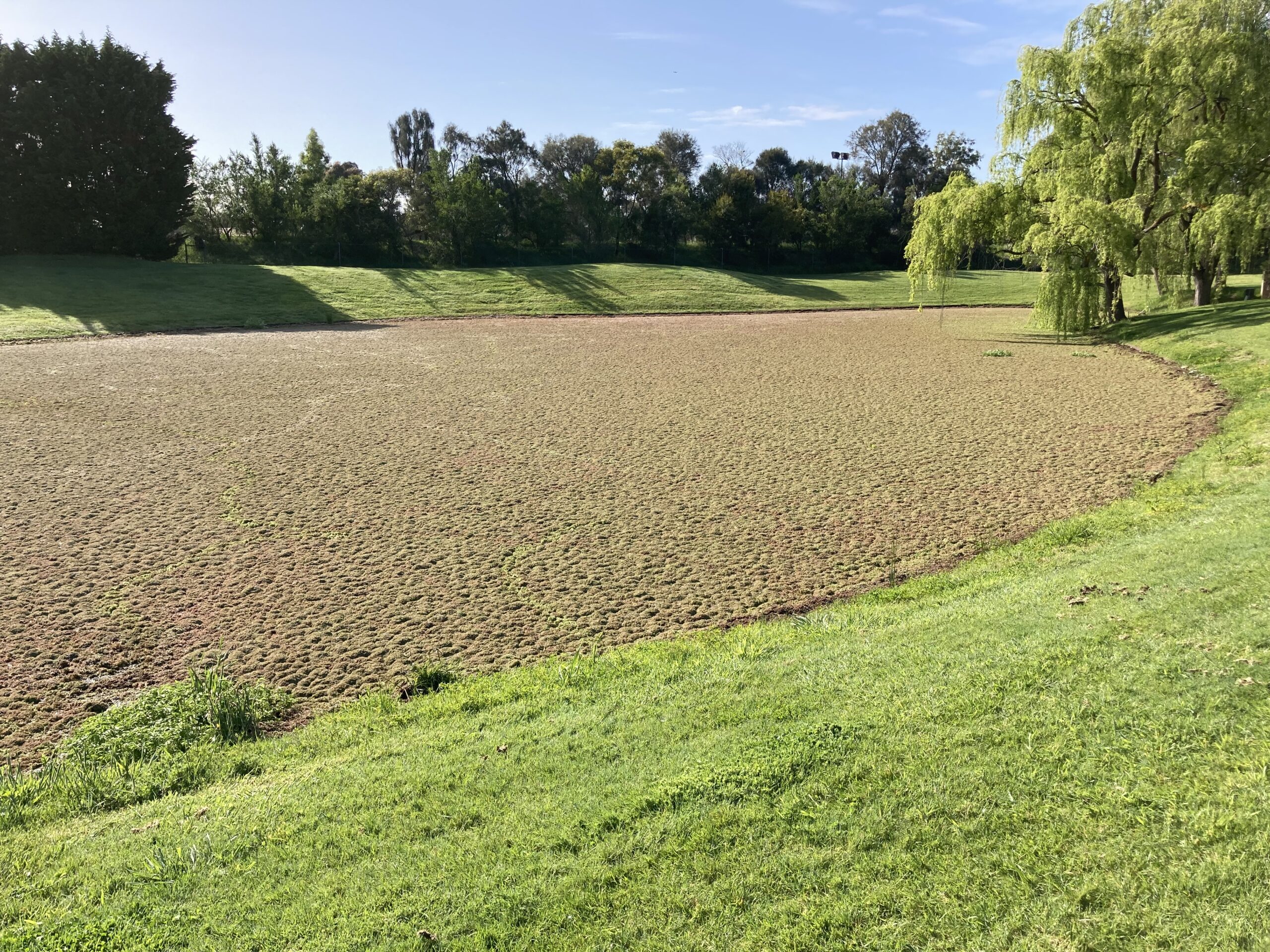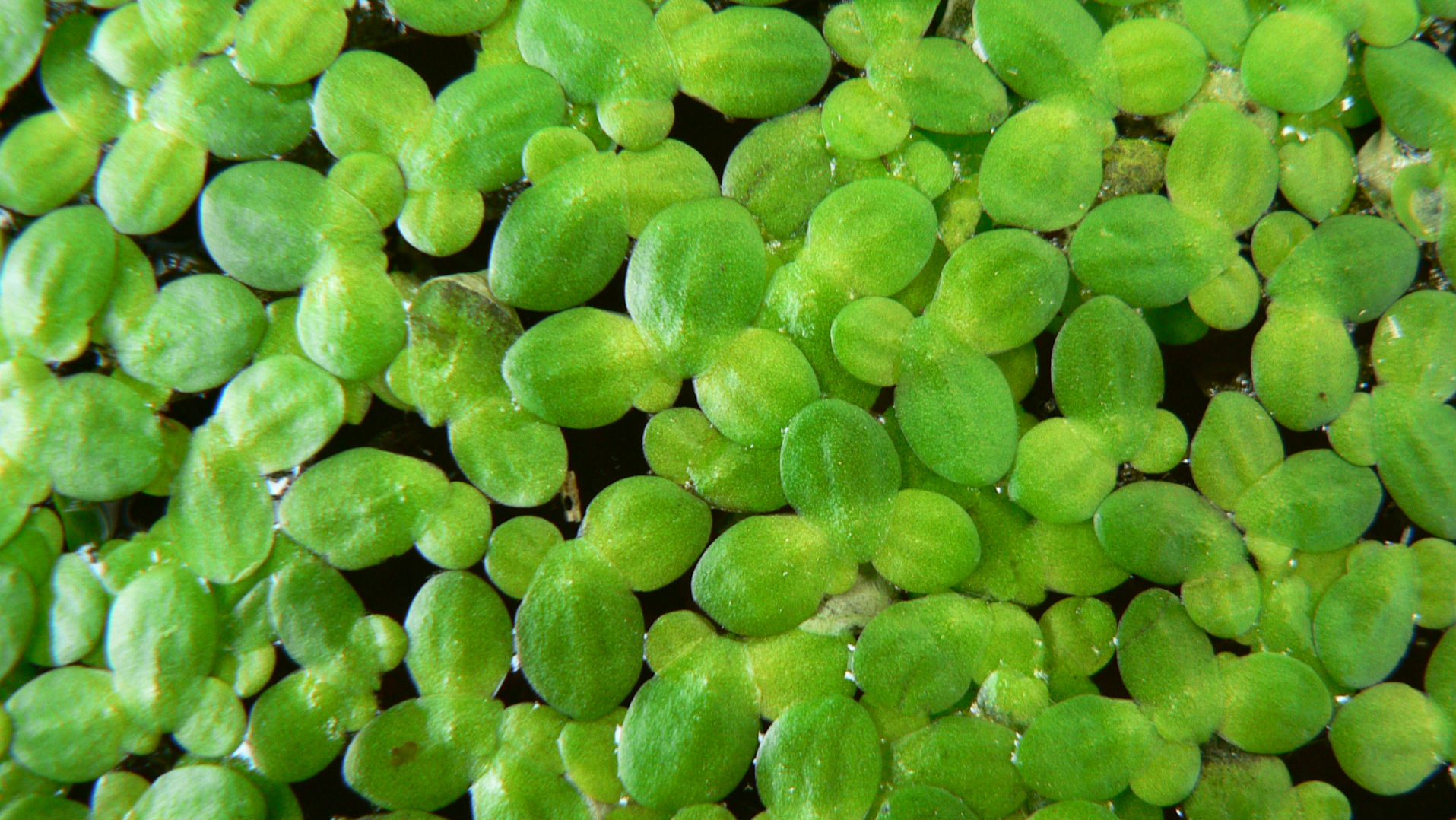
Ultimate Guide To Duckweed In Dams & Ponds
If you’ve ever glimpsed a water body blanketed in a green carpet, you’ve probably spotted duckweed. This tiny free-floating plant is found all over Australia and can be both a blessing and a challenge. This guide is all about the three main types found across the country: Common Duckweed, Giant Duckweed, and Rootless Duckweed.
You might think it’s just a common weed, but there’s more than meets the eye. Sure, it grows quickly and can cover entire ponds and dams in no time, but it also plays a big role in its ecosystem. This guide is here to help you understand what duckweed is, how to identify it, and what to do about it in your local pond or dam. Easy-to-understand and packed full of practical advice, we’ve got you covered whether you’re a backyard pond enthusiast or a seasoned dam manager.
How to identify duckweed
It’s important to be able to differentiate between the three common species of duckweed as treatment may vary. Let’s identify the key characteristics that set the different species apart.
Common Duckweed
| Scientific Name | Lemna Minor |
| Description | A common tiny native plant which floats freely on the water’s surface. The leaves of the plant are green above and red below. They have three (rarely five) veins and small air spaces to assist flotation. It can have several oval leaves that are from 1 to 8mm in length with each having a single root hanging in the water. |
| Habitat | Stationary and slow-moving fresh water bodies, especially where nutrient levels are high such as dams, ponds and lakes. |
| Distribution | NSW, NT, QLD, SA, TAS, VIC, WA |
| Dispersal | Birds are important in dispersing L. minor to new sites. The sticky root enables the plant to adhere to the plumage or feet of birds and can thereby colonise new ponds. |

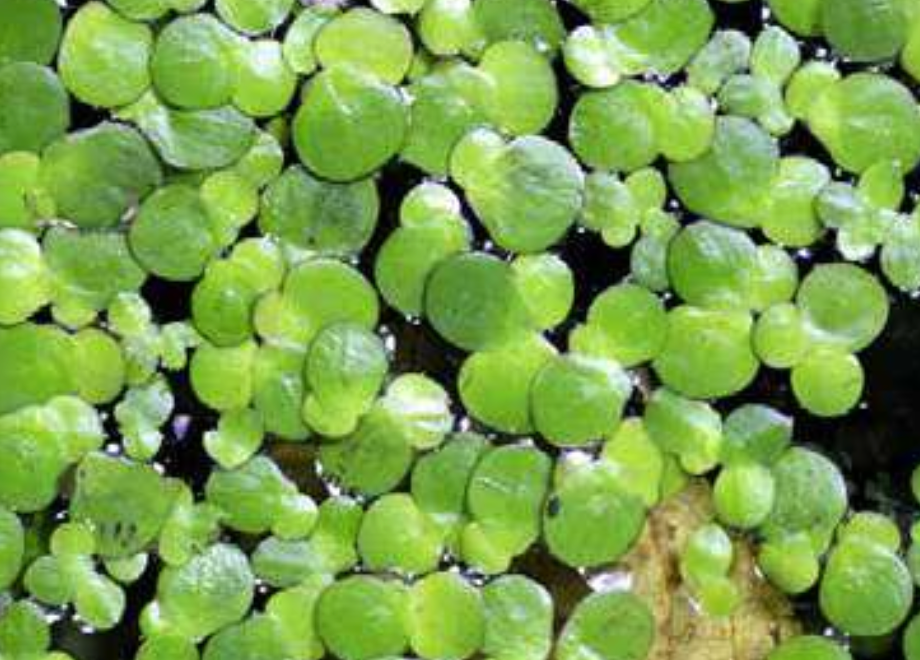
Giant Duckweed
| Scientific Name | Spirodela polyrhiza |
| Description | A free floating aquatic plant that is typically larger than other species of duckweed. It usually has two to three oval leaves which are 5 to 10 mm long with several veins, 7 to 16 on each leaf. Each leaf has within 5 to 18 short roots hanging below in the water. The upper surface of the leaf is yellow to green in colour whilst beneath they are usually a purplish colour. The upper side also commonly has red spots on it. |
| Habitat | Stationary and slow-moving fresh water bodies, especially where nutrient levels are high such as dams, ponds and lakes. |
| Distribution | NSW, NT, QLD |
| Dispersal | Attaching to animals such as waterfowl, human activity or floods. |


Rootless Duckweed
| Scientific Name | Wolffia arrhiza |
| Description | A native plant that floats on the water’s surface, it is typically smaller than the other species of duckweed. The green part of the plant, the frond, is a sphere measuring about 1 mm wide, but with a flat top that floats at the water’s surface. Unlike the other species of duckweed, it has no roots. |
| Habitat | Stationary and slow-moving fresh water bodies, especially where nutrient levels are high such as dams, ponds and lakes. |
| Distribution | NSW, NT, QLD, SA, TAS, VIC, WA |
| Dispersal | Attaching to animals such as waterfowl, human activity or floods. |

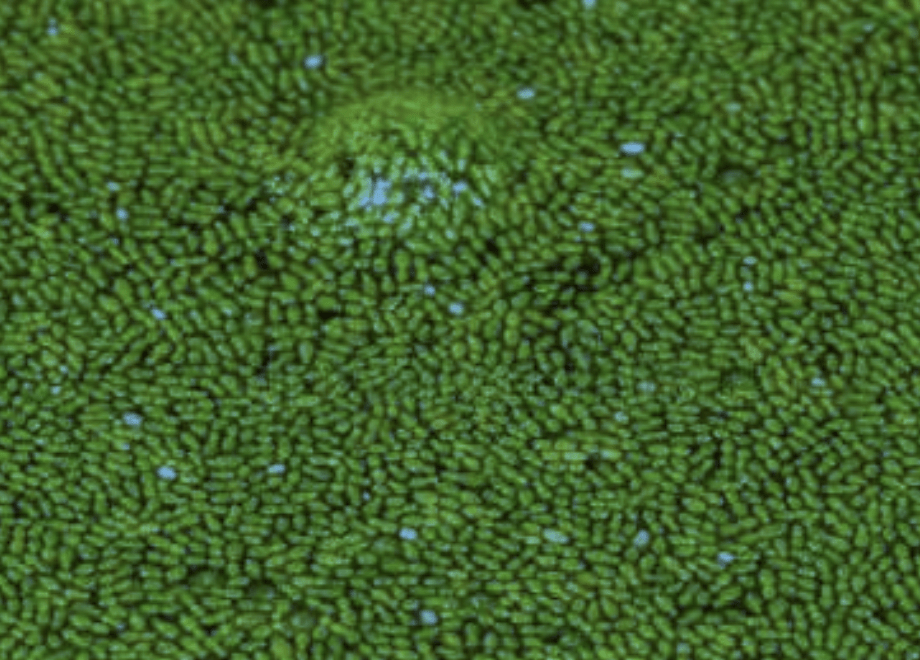
Across Australia there is a variety of distribution with these three types of duckweed, with the breakup between states looking like this:
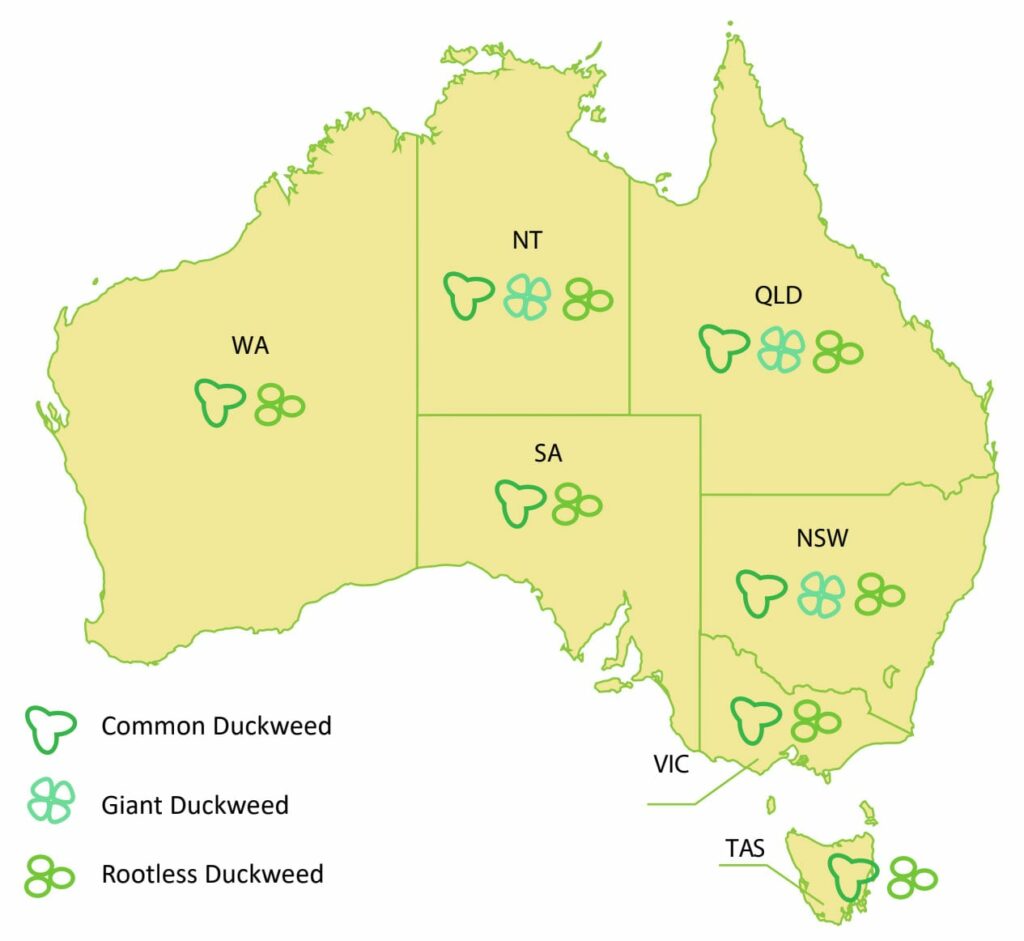
Why too much duckweed is bad for your waterway
Duckweeds are free floating plants that are native to Australia. It can be a welcome aquatic plant in a water body or it can become extremely invasive. They are considered problem weeds due to their prolific growth rate, duckweed is one of the fastest growing plants. Under optimal conditions, duckweed has the ability to double its mass in less than four days.
Duckweed grows especially in warm, nutrient rich conditions when it receives long periods of light. As a result, water bodies experience rapid growth of duckweed during the warmer summer months which have longer periods of daylight.
The presence of duckweed in an aquatic environment can adversely impact it due to its ability to form dense and multilayered mats in its later growth stages. Once the infestation is completely blanketing the surface of the water, it can give rise to physical and chemical changes in the water beneath.
The dense growths of duckweed act as a physical barrier on the water’s surface. It can interfere with light penetration into the water column.
With less light, its shades out plants and reduces the ability of vegetation in the lower levels of the water
body to photosynthesise. If respiration begins to overtake photosynthesis, it will lead to an increase in dissolved carbon dioxide and a reduction of the pH of the water.
The presence of duckweed also impacts gas exchange between the water and the air. The mats formed prevent oxygen diffusion into the water, thereby dramatically decreasing the level of dissolved oxygen in the water.
Light reduction and low oxygen in the water impact the communities of plants and animals living in the water below the mats, deteriorating the food web of the aquatic ecosystem.
The process of duckweed decomposing also reduces the amount of dissolved oxygen in the water. This creates a hostile environment that does not have enough oxygen to support most life, especially fish.
Duckweed Growth Stages
Not all treatments for duckweeds are effective at any growth stage. So before taking any action to treat the duckweed it is important to fist recognise how severe the algae bloom is. Generally it will be in one of the four stages below:
Primary Growth Stage
0-30% of the water body is covered in Duckweed

Primary growth occurs in the early stages of an infestation, when plants are not crowded. The water surface is clearly visible between plants and the plant is lying flat on the surface of the water.
Secondary Growth Stage
30-60% of the water body is covered in Duckweed
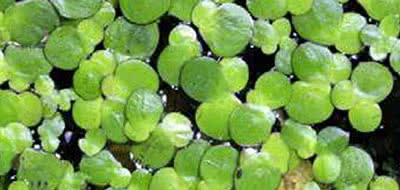
Secondary growth occurs when the water surface is barely visible but the Duckweed is still only a single layer
Tertiary Growth Stage
60-100% of the water body is covered in Duckweed
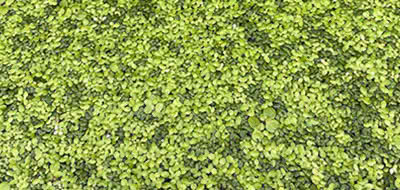
Tertiary growth occurs when the plants become crowded and mature in infestation. The water surface is no longer visible preventing light from entering the water.
Multilayered Growth Stage
100%+ of the water body is covered in Duckweed
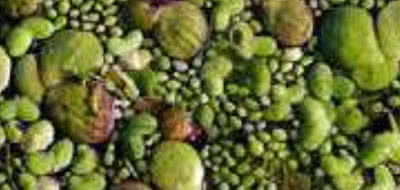
Tertiary weed mats can become multilayered, displaying ridge-like thickenings as layers build up affecting the water beneath by eliminating submerged plants and algae, preventing photosynthesis and blocking oxygen diffusion from the air resulting in an anaerobic environment.
After establishing which stage the duckweed is currently in, use that information combined with the duckweed treatment methods below to treat your water body appropriately.
Duckweed Treatments
There are two main types of treatment for duckweed available. These are:
- Aquatic herbicides (chemical & natural based)
- Physical removal (manual & machine)
This table is designed to help you decide which treatment is the most appropriate for your water body based on the stage of your duckweed algae bloom.
| Chemical Herbicide | Natural Herbicide | Manual Removal | Machine Removal | |
| Primary Growth | ✅ | ✅ | ✅ | |
| Secondary Growth | ✅ | ✅ | ✅ | ✅ |
| Tertiary Growth | ✅ | ✅ | ✅ | |
| Multilayered | ✅ | ✅ |
Aquatic Herbicides
All approved aquatic herbicides can be used on all species of Duckweed but not all aquatic herbicides
are effective against all growth stages.
The following Aquatic Herbicides are successful on primary and secondary growth stages:
- AQ200
- Calcium dodecyl benzene sulfonate
- Glyphosate
- Orange Oil (natural based)
The following Aquatic Herbicides are successful on tertiary stages of growth:
- AQ200
- Glyphosate
The following Aquatic Herbicides are successful on multilayered stages of growth:
- AQ200
Benefits of Chemical Control
Typically only one full application with follow up spot treatments is necessary and the treatment is fast, killing duckweed within 7-14 days.
Disadvantages of Chemical Control
Treated plants remaining in the water can cause oxygen to deplete within the system, affecting water quality. However, if left untreated water quality will continue to decline. Treating with aquatic herbicides may see a short term decline in water quality, however once cleared a rapid recovery takes place.
There is a possibility of spray drift onto non-target vegetation.
There is a withholding period is once the herbicide has been applied meaning the water cannot be used for either irrigation or watering stock until the breakdown of the herbicide (excludes orange oil).
Physical Removal – Duckweed Skimmers
Physical removal can be a labour-intensive method, but has the advantage of being ecologically benign. Small infestations of Duckweed in accessible areas can be removed with rakes and fine-mesh nets, and used as either fodder or compost. The disadvantage of this method is that under optimal conditions, Duckweed can double its population in 2 to 10 days.
Advantages of Physical Removal
- Removes extra nutrients caused by the breakdown of Duckweed thereby reducing the likelihood of future blooms.
- A dense coverage consumes a lot of oxygen leaving little left for fish and other aquatic organisms. Avoids fish kills by ensuring adequate oxygen levels remain.
- Removes habitat for breeding mosquitoes.
Aquatic Surface Skimmers
Can be used on all species of Duckweed and primary, secondary and tertiary growth stages. This method is best used in conjunction with spray treatments or when partial removal is desired.
Physically removing Duckweed from the water’s surface will reduce the likelihood of future blooms by decreasing the amount of nutrients in your water. Nutrient-rich water lets aquatic vegetation thrive, meaning you might experience more infestations of unwanted Duckweed. Easily remove Duckweed from your water body in 4 steps:
- Toss the skimmer in the water
- Slowly pull it back in using the string attached
- Dump the Duckweed out onto the bank or into a
container for easy transport - Repeat
Tips
- Keep collected Duckweed away from water’s edge to avoid recontamination.
- Use the collected Duckweed on your garden! Duckweed is a great fertiliser.
Aquatic Harvesting
For sizable infestations of duckweed, where chemical treatment is neither desirable nor practical, amphibious aquatic harvesting machines provide an efficient solution. These machines can effectively tackle all species of duckweed, offering a robust response to even the most challenging proliferation of this aquatic plant. Well-suited to larger expanses, these harvesters can swiftly decrease an infestation’s bulk, significantly reducing its presence in accessible areas.
However, complete eradication of duckweed often requires a multi-pronged approach. While aquatic harvesters are incredibly efficient, they may leave remnants in hard-to-reach areas, close to edges, or in shallow waters. Therefore, it’s vital to supplement the use of aquatic harvesters with other control methods. These combined efforts can help ensure a thorough removal of duckweed, even from the most stubborn pockets of growth.
Maintaining a Healthy Water Body
Once your water body is clear of duckweed, the journey towards maintaining its health has only just begun. Achieving a balanced ecosystem requires ongoing attention and the implementation of the right practices. But what are these practices? How can you ensure your pond or dam remains a thriving, balanced, and healthy environment?
We will be diving deeper into this in following guides, so please check back regularly.
For access to the full step by step comprehensive guide to managing Duckweed, including detailed product quantities and recommendations please download our complete Duckweed Manual.



